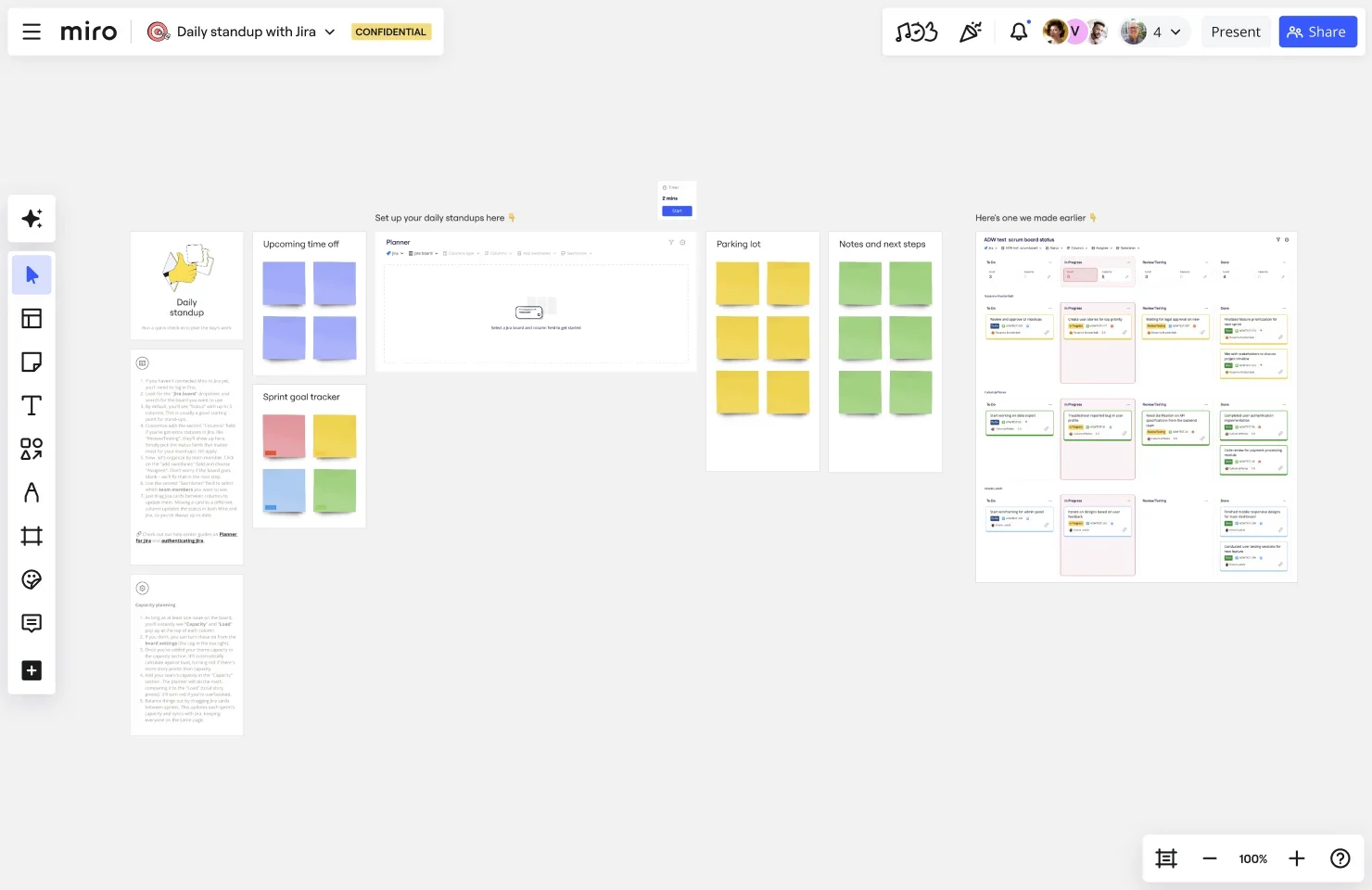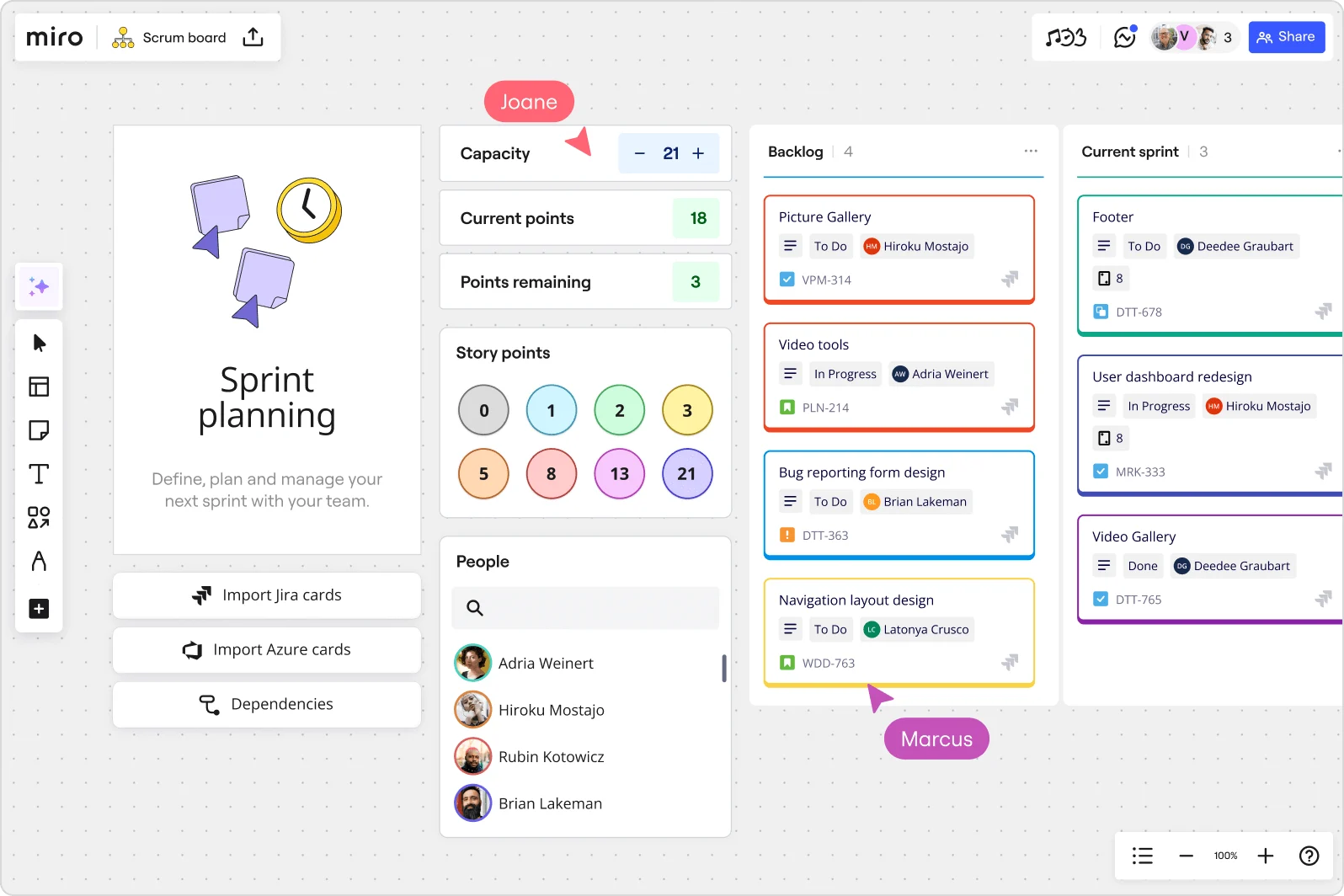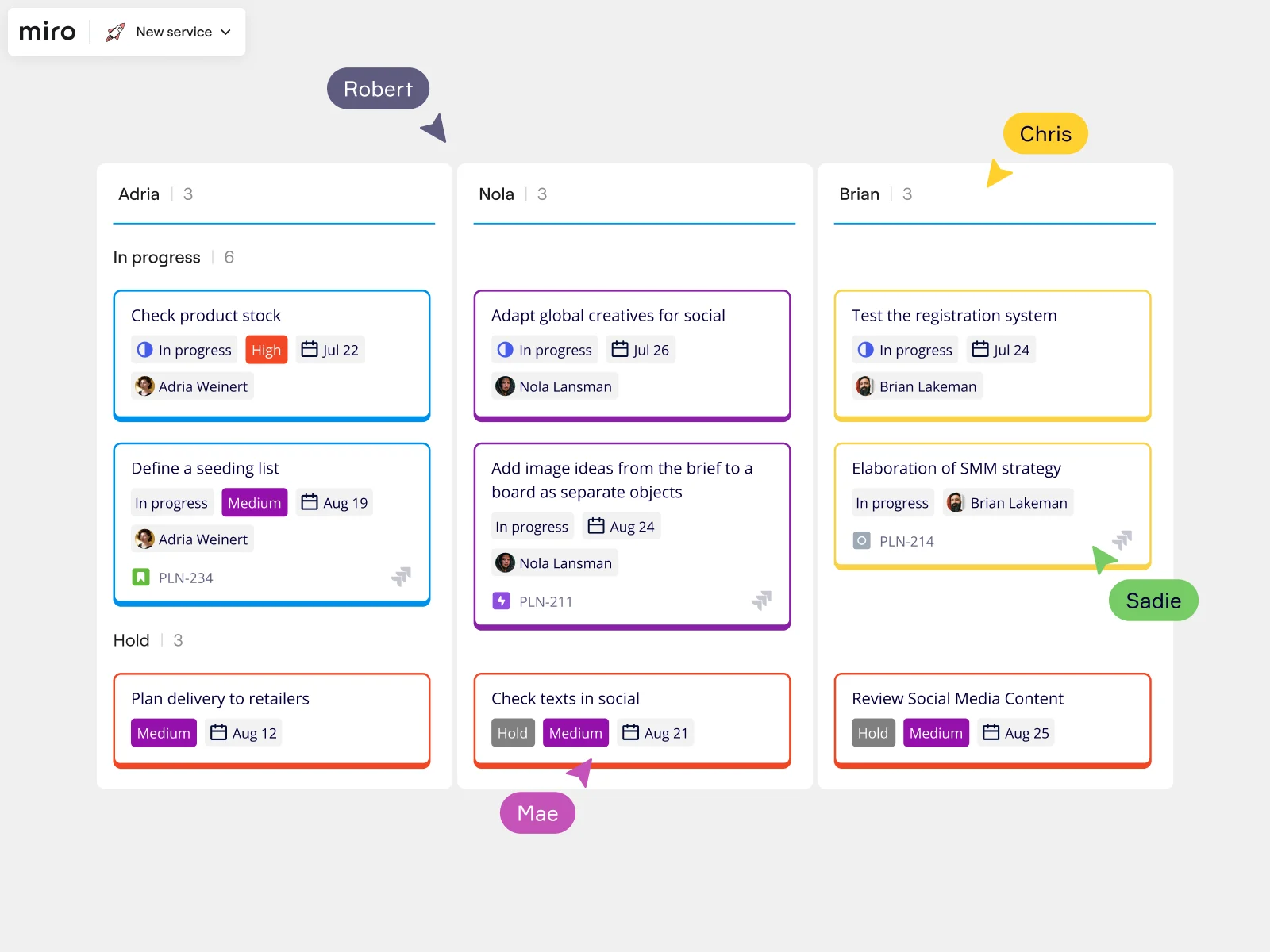
Scrum vs. Kanban vs. Scrumban: Which Agile method is best?

Summary
In this guide, you will learn:
Core differences: Scrum, Kanban, Scrumban (planning, roles, workflow).
Scrum: Structured, timeboxed sprints, defined roles; Kanban: Continuous flow, flexible tasks.
Scrumban: Combines Scrum structure with Kanban flexibility (flow, WIP limits, optional timeboxed iterations).
Scrumban benefits: Adaptability, deadlines, roles (transitioning/hybrid workflows).
Unique metrics/practices: Scrum's sprint backlog, Kanban's flow metrics, Scrumban's balance.
Tools like Miro: Support Agile with customizable boards, templates, collaboration for productivity.
Try Miro now
Join thousands of teams using Miro to do their best work yet.
Choosing the right Agile methodology can feel overwhelming, especially with so many options on the table. If you're wondering whether Scrum vs. Kanban vs. Scrumban is best for your team, you're in the right place. Each approach has its strengths, and understanding the differences can help you make an informed decision. Let’s break them down and figure out which one suits your team’s needs.
What is Scrum?
Scrum is a structured framework built around sprints. It’s a popular methodology for teams who thrive on clear roles, responsibilities, and regular milestones.
In Scrum, there are three main roles: the Scrum Master, the Product Owner, and the Development Team. The Scrum Master facilitates the process, helping the team stay on track, while the Product Owner defines what needs to be built and prioritizes the tasks. The Development Team focuses on completing the tasks.
Scrum is built around several key events: Sprints (time-boxed work periods), Sprint Planning, Daily Stand-ups, Sprint Reviews, and Retrospectives. These events ensure transparency, continuous feedback, and ongoing improvements within the team.

What is Kanban?
Kanban is all about flow. It’s a more flexible approach that emphasizes visualizing the work and continuously delivering value.
Kanban uses boards to track work, typically split into columns like "To Do," "In Progress," and "Done." The goal is to move tasks from one column to the next as smoothly as possible, ensuring there are no bottlenecks. A core principle of Kanban is limiting work in progress (WIP). This reduces overburdening the team and helps maintain focus. Unlike Scrum, there are no sprints or predefined roles—just a continuous flow of tasks.
Teams using Kanban benefit from the ability to adapt quickly. Work is pulled based on capacity, not pushed through a strict cycle.

What is Scrumban?
Scrumban is a hybrid methodology that blends the structure of Scrum with the flexibility of Kanban. It was created for teams who need the discipline of Scrum but crave the adaptability that Kanban provides.
Scrumban uses Scrum’s roles and events but introduces Kanban’s continuous flow and work-in-progress limits. It’s ideal for teams who find Scrum too rigid or Kanban too loose. The combination helps teams stay on track with deadlines while also being responsive to changing priorities.
You’ll often see Scrumban in projects that evolve quickly, needing both structure and flexibility. It’s a perfect solution when you need to scale or make frequent adjustments on the fly.

Key differences between Scrum and Kanban
Understanding the differences between Scrum and Kanban can help you determine which methodology is best for your team. At the core, Scrum is a structured framework, while Kanban is a flow-based system.
Structure vs. flow
In Scrum, work is organized into time-boxed iterations (Sprints), and the team commits to specific tasks during that period. In Kanban, work is continuous, and tasks flow from one stage to the next without a fixed iteration.
Time-boxed iterations vs. continuous delivery
Scrum’s emphasis on time-boxed iterations (Sprints) provides clear milestones for the team to work towards. On the other hand, Kanban uses continuous delivery, allowing for more flexibility and an ongoing flow of work without predetermined timelines.
Roles and responsibilities
Scrum defines roles and events to guide the team through the process, while Kanban focuses on the flow of tasks and has fewer defined roles. These differences make Scrum ideal for teams that need clear direction and regular milestones, while Kanban works best for teams that require flexibility and continuous delivery.
Pros and cons of Scrum, Kanban, and Scrumban
Every Agile methodology offers unique benefits, but they also come with their challenges. Here’s a closer look at the pros and cons of each approach.
Scrum
Scrum is ideal for teams who need structure and clear deadlines.
Pros: Scrum provides clear roles and time-bound goals, which can help teams stay focused and productive. The regular check-ins and structured sprints foster collaboration and continuous improvement. Scrum also ensures accountability and aligns teams towards common goals.
Cons: Scrum’s rigid structure may feel restrictive for teams that need more flexibility. Some teams may struggle with the time-boxed nature of sprints or the frequent planning and reviews, especially if they prefer to work in a less constrained way.
Kanban
Kanban thrives in environments where flexibility and continuous delivery are key.
Pros: Kanban offers flexibility, allowing teams to continuously prioritize and adapt to changing requirements. Its visual boards make it easy for teams to track work, while limiting work-in-progress (WIP) helps maintain focus and avoids overburdening the team.
Cons: While Kanban’s flow-based system offers flexibility, it can sometimes lack the structure needed for teams who prefer clear goals and timelines. Without defined roles or events, some teams may struggle with coordination or accountability.
Scrumban
Scrumban blends the best aspects of both Scrum and Kanban for teams that need structure with adaptability.
Pros: Scrumban offers the flexibility of Kanban with the structure of Scrum. Teams can adapt quickly to changing requirements while still maintaining deadlines and roles. It’s perfect for teams that need the best of both worlds and can scale effectively while meeting goals.
Cons: Scrumban can be challenging because of its balance between flexibility and structure. Teams may struggle if they swing too far towards one side, either becoming too rigid like Scrum or too unstructured like Kanban, which can hinder productivity.
Simplify your Agile team events in Miro
If you’re ready to streamline your Agile workflows and collaborate more effectively, give Miro a try.
Our innovation workspace offers real-time and async collaboration features, and customizable intelligent templates to speed up your work — all on an AI-powered visual canvas.
Sign up to get started.
Author: Miro Team
Last update: October 2, 2025